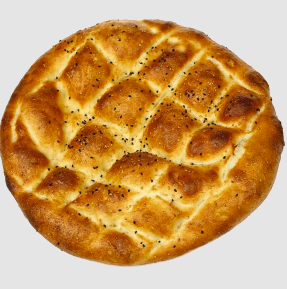Ramadan pide is a traditional type of bread that is an important part of Turkish cuisine and culture, especially made during the month of Ramadan. This traditional food, which has continued from the Ottoman Empire to the present day, is considered an indispensable item on Iftar tables during Ramadan. While the history of Ramadan pide is believed to date back to the 15th century during the Ottoman era, some sources suggest that this tradition goes even further back to the Seljuk period. During the Ottoman Empire, the bread baked for Iftar meals at the imarets of Sultan Fatih Mehmet became a part of Ottoman cuisine over time. During this period, pide was one of the staple foods served to those breaking their fast at the Iftar tables set in mosque courtyards.

Ramadan Pide
The ingredients used in making Ramadan pide are quite simple; flour, water, yeast, and salt are the basic components. However, the distinctive feature of Ramadan pide lies in the consistency of its dough. The dough for pide is softer and stickier compared to other types of bread. This special consistency gives the pide a unique texture. It is sprinkled with nigella seeds, sesame seeds, or black cumin before being baked in the oven. Although Ramadan pide is traditionally baked in stone ovens, it can also be made in modern ovens. The shape and size of the pide can vary depending on the region; in some places, it is made larger and thinner, while in other areas, it is baked in smaller and thicker shapes.
Ramadan pide has become a widely consumed tradition not only in Turkey but also in the Balkans and the Arab world during Ramadan. Nowadays, bakeries and pide shops produce fresh Ramadan pide daily and see high demand before Iftar time. Additionally, there are many recipes available on the internet and in cookbooks for those who wish to make Ramadan pide at home. Although there are many varieties of Ramadan pide today, the most common type is plain pide, which can also be made with different fillings such as cheese, minced meat, or spinach.

